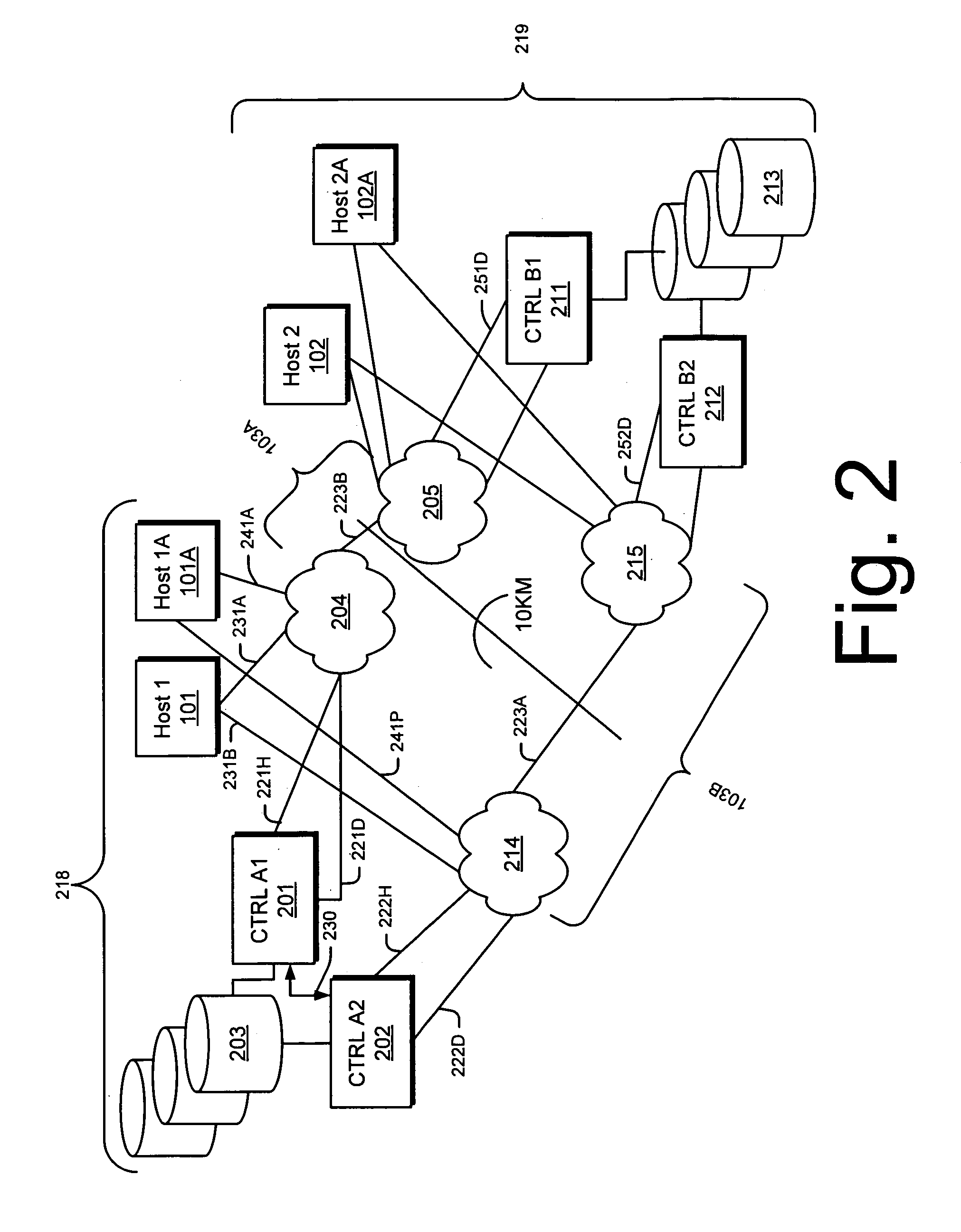Method for transaction log failover merging during asynchronous operations in a data storage network
a data storage network and transaction log technology, applied in the field of data consistency in data storage systems, can solve the problems of increasing the overall system performance, affecting the performance of the host computer, and presenting an inefficient use of system resources by the passive controller
- Summary
- Abstract
- Description
- Claims
- Application Information
AI Technical Summary
Benefits of technology
Problems solved by technology
Method used
Image
Examples
Embodiment Construction
[0037]The system of the present invention comprises a data backup and remote copy system which provides disaster tolerance. In particular, the present system provides a peer-to-peer remote copy (backup) function which is implemented as a controller-based replication of one or more LUNs (logical units) between two remotely separated pairs of array controllers connected by redundant links. The present system further provides a data logging mechanism (a write history ‘log unit’) for storing commands and data for every transaction that occurs in the situation where the remote backup storage device is unavailable because both links have failed, a remote site is down, or because of a site failover. The system performs an in-order merging of the log unit data with the data on the previously unavailable backup device to quickly return both local and remote sites to the same data state after link restoration or remote site restoration. In the situation wherein an array controller fails durin...
PUM
 Login to View More
Login to View More Abstract
Description
Claims
Application Information
 Login to View More
Login to View More - R&D
- Intellectual Property
- Life Sciences
- Materials
- Tech Scout
- Unparalleled Data Quality
- Higher Quality Content
- 60% Fewer Hallucinations
Browse by: Latest US Patents, China's latest patents, Technical Efficacy Thesaurus, Application Domain, Technology Topic, Popular Technical Reports.
© 2025 PatSnap. All rights reserved.Legal|Privacy policy|Modern Slavery Act Transparency Statement|Sitemap|About US| Contact US: help@patsnap.com



